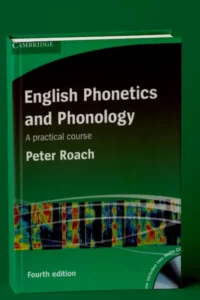English Phonetics and Phonology has established itself as the most practical, comprehensive text in the field and become widely used in many parts of the world in universities and other institutions of higher education. This new edition takes into account recent developments in the teaching of phonology.
English Phonetics and Phonology
English Phonetics and Phonology includes updated references, fuller coverage of intonation, and a new chapter on different varieties of English with illustrative recorded material. At the end of each chapter in the book there are notes giving information on further reading, discussion of the more challenging issues, written exercises and, where appropriate, suggestions for teachers.
In addition the audio CDs include recorded exercises for every chapter which are particularly helpful for non-native speakers. A full answer key is available at the back of the book. Additional exercises and other supporting material are available online.
Purpose of This Course
You probably want to know what the purpose of this course is, and what you can expect to learn from it. An important purpose of the course is to explain how English is pronounced in the accent normally chosen as the standard for people learning the English spoken in England. If this was the only thing the course did, a more suitable title would have been “English Pronunciation”.
However, at the comparatively advanced level at which this course is aimed, it is usual to present this information in the context of a general theory about speech sounds and how they are used in language; this theoretical context is called phonetics and phonology.
Why is it necessary to learn this theoretical background? A similar question arises in connection with grammar: at lower levels of study one is concerned simply with setting out how to form grammatical sentences, but people who are going to work with the language at an advanced level as teachers or researchers need the deeper understanding provided by the study of grammatical theory and related areas of linguistics.
The theoretical material in the present course is necessary for anyone who needs to understand the principles regulating the use of sounds in spoken English.
How the course is organized
You should keep in mind that this is a course. It is designed to be studied from beginning to end, with the relevant exercises being worked on for each chapter, and it is therefore quite different from a reference book. Most readers are expected to be either studying English at a university, or to be practising English language teachers. You may be working under the supervision of a teacher, or working through the course individually; you may be a native speaker of a language that is not English, or a native English-speaker. Each chapter has additional sections:
- Notes on problems and further reading: this section gives you information on how to find out more about the subject matter of the chapter.
- Notes for teachers: this gives some ideas that might be helpful to teachers using the book to teach a class.
- Written exercises: these give you some practical work to do in the area covered by the chapter. Answers to the exercises are given on pages 200-9.
- Audio exercises: these are recorded on the CDs supplied with this book (also convertible to mp3 files), and there are places marked in the text when there is a relevant exercise.
- Additional exercises: you will find more written and audio exercises, with answers, on the book’s website.
Only some of the exercises are suitable for native speakers of English. The exercises for Chapter 1 are mainly aimed at helping you to become familiar with the way the written and audio exercises work.

